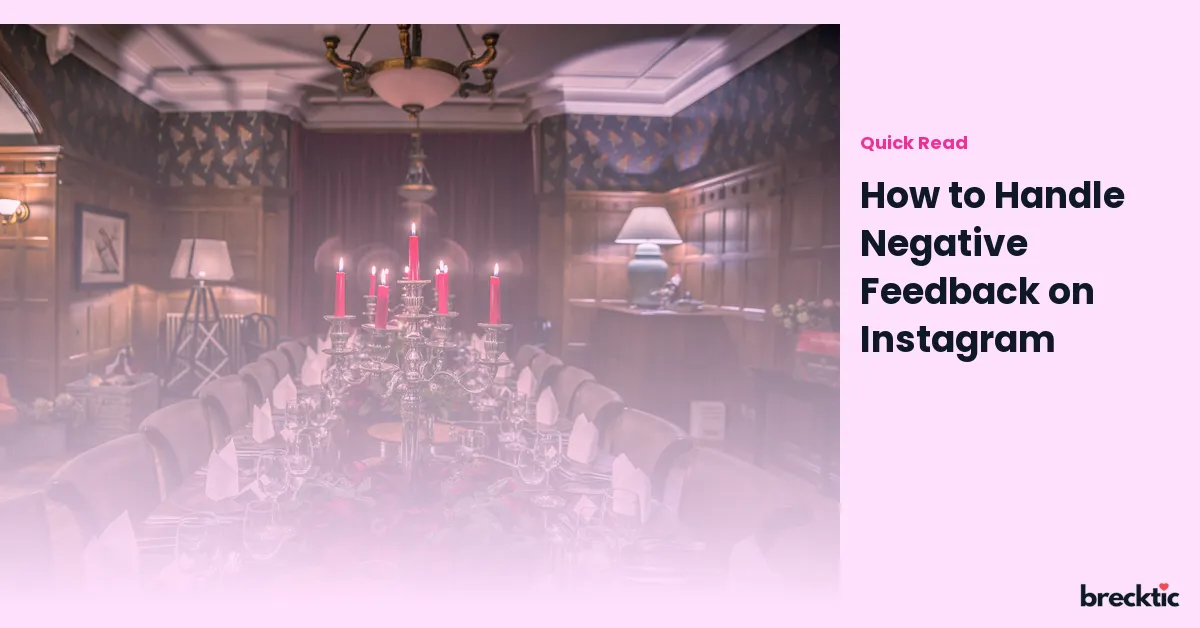Managing negative feedback on Instagram can be tough, but it’s important for keeping a positive online presence. Knowing how to handle these comments can make your social media experience better. This guide provides practical tips to handle criticism effectively and turn it into a chance for growth.
Understand the Feedback
First, take a moment to understand the feedback you’re getting. Negative comments can sometimes offer useful insights into your content or service. Ask yourself: Is there a common theme in the criticism? Are there specific things people are unhappy about? By spotting these patterns, you can make informed decisions on how to deal with them.
Stay Calm and Professional
When you get negative feedback, it’s important to stay calm and professional. Don’t respond quickly or emotionally. Instead, take time to write a thoughtful reply that addresses the concern respectfully. This approach shows you are professional and helps keep a positive image of your brand.
Crafting a Thoughtful Response
A well-thought-out response can turn a negative situation into a positive one. Start by acknowledging the feedback and showing you understand the commenter’s point of view. Offer a solution or explain how you plan to fix the issue. For example, if someone criticizes your product, thank them for their feedback and mention any upcoming improvements. This shows you value their opinion and are committed to making things better.
Use Negative Feedback for Improvement
Negative feedback is a useful tool for making improvements. Use it as a chance to improve your content or service. If many people point out problems with your posts, it might be time to rethink your content strategy. Consider conducting a survey or gathering more feedback to gain deeper insights and make necessary changes.
Engage with Your Audience
Engaging with your audience is important for building a strong relationship. Respond to comments, whether positive or negative, in a way that encourages conversation. This engagement makes your followers feel valued and heard. Regular interaction shows that you are attentive to your audience and their needs.
Focus on Solutions
When dealing with negative feedback, focus on finding solutions rather than dwelling on the criticism. Offer practical steps you’re taking to address the issue. For example, if someone complains about a delayed response, explain how you are improving your response time. Showing that you’re taking action can turn a negative experience into a positive outcome.
Maintain a Positive Tone
Even when responding to negative feedback, keep a positive tone. Your reply should reflect your commitment to providing a good experience. Avoid getting defensive or arguing. Instead, thank the commenter for their feedback and emphasize your dedication to improving. This helps in maintaining a constructive and positive interaction.
Learn from the Experience
Every piece of negative feedback is a learning opportunity. Use the comments to reflect on what might need changing. Whether it’s updating your content or improving customer service, take steps based on the feedback you receive. This ongoing improvement helps in growing your presence and better serving your audience.
Monitor Feedback Regularly
Regularly monitor feedback on your Instagram account to stay on top of what people are saying. This will help you catch any issues early and respond quickly. Set up notifications for comments and messages to ensure you don’t miss any important feedback. Being proactive can help you manage negative comments before they escalate.
Encourage Positive Interaction
Encourage positive interaction on your Instagram page by promoting engaging content and fostering a supportive community. Share posts that celebrate your audience or highlight positive feedback. This not only creates a more pleasant environment but also helps balance out the negative comments you may receive.
Conclusion
Handling negative feedback on Instagram effectively is key to maintaining a positive online presence. By understanding feedback, staying professional, and using it for improvement, you can turn criticism into a chance for growth. Engaging with your audience, focusing on solutions, and keeping a positive tone will help you manage negative comments and build a stronger relationship with your followers.
Engage with Your Audience
Engaging with your audience after receiving negative feedback is key. Responding to comments shows that you care about your followers’ opinions. Make sure to thank people for their feedback and show that you are listening. This helps build a stronger relationship with your audience and can turn a negative experience into a positive one.
Monitor and Adjust Your Strategy
Keep track of the feedback you receive over time. Look for trends or recurring issues that might indicate a larger problem. For instance, if many users mention a similar issue with your posts, it could be a sign that you need to adjust your strategy. Regularly review your content and make changes based on what you learn from feedback.
Learn and Grow from the Experience
Every piece of feedback, even the negative ones, is an opportunity to learn and grow. Reflect on what you can take away from the comments and how you can apply these lessons to improve. Use feedback as a guide to help you create better content and provide better service. By embracing this mindset, you turn criticism into a valuable tool for your success on Instagram.

